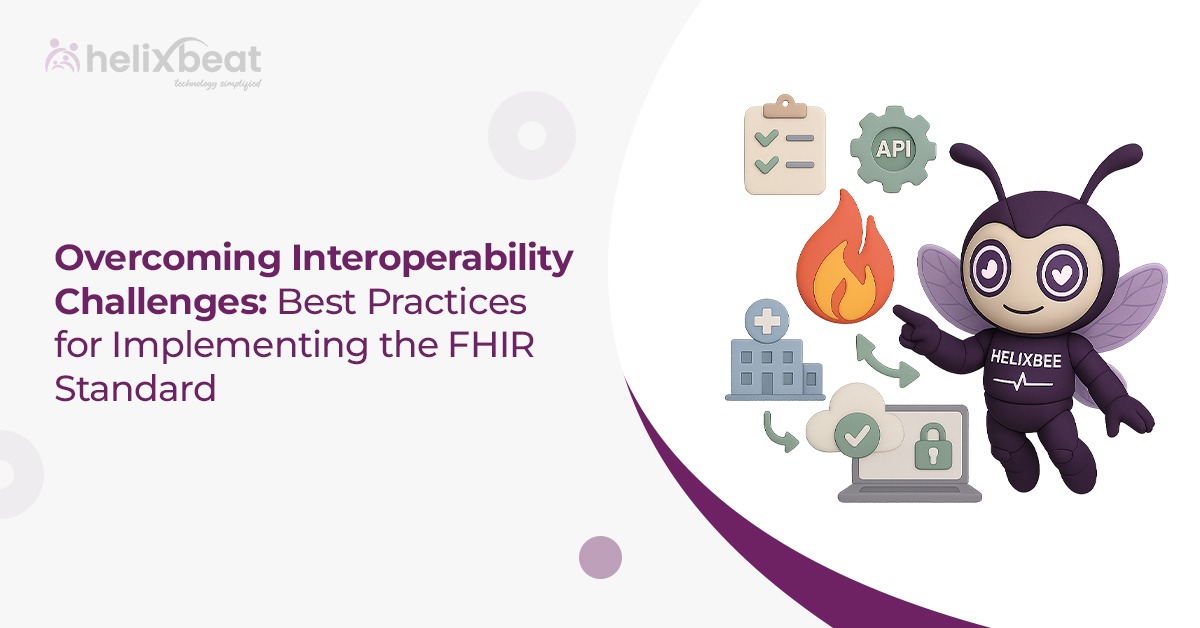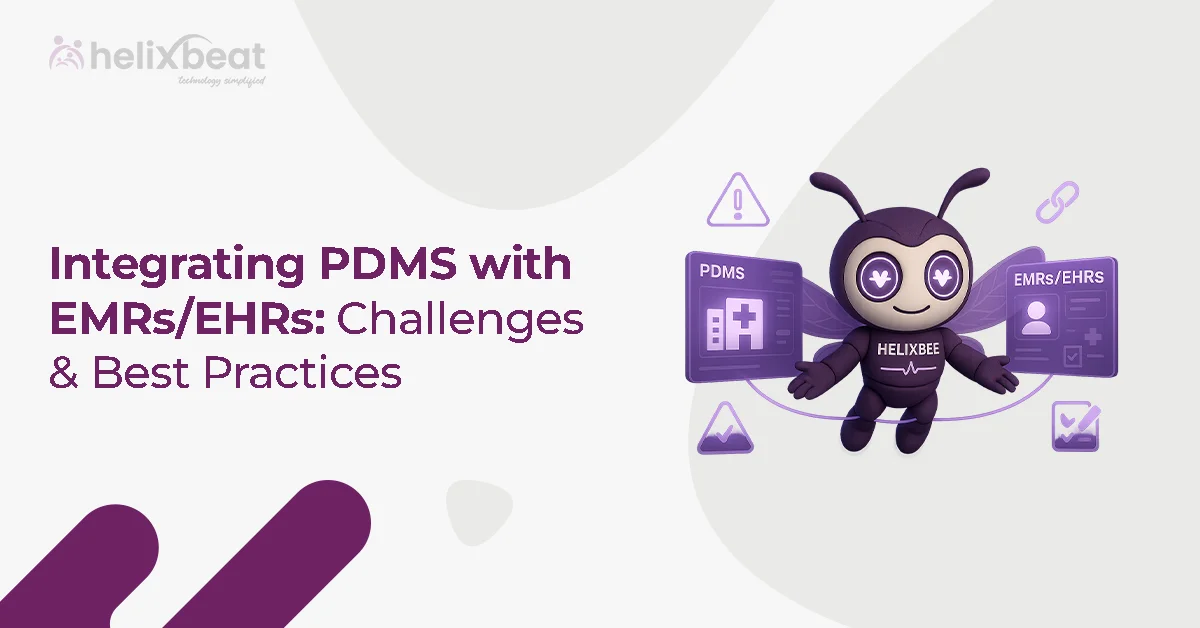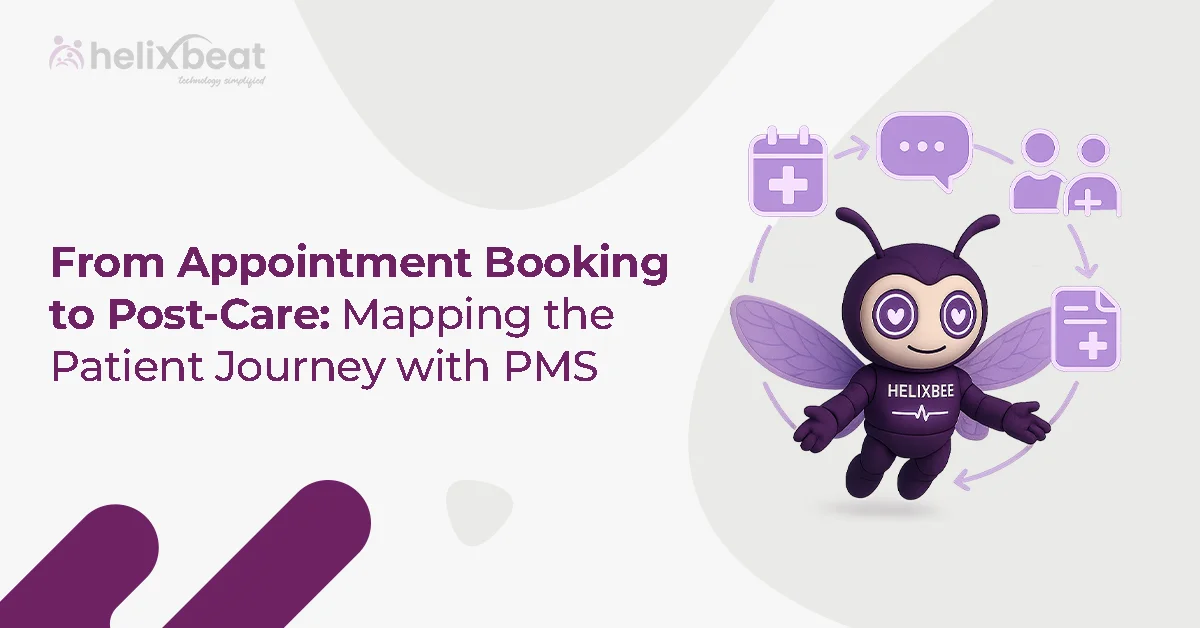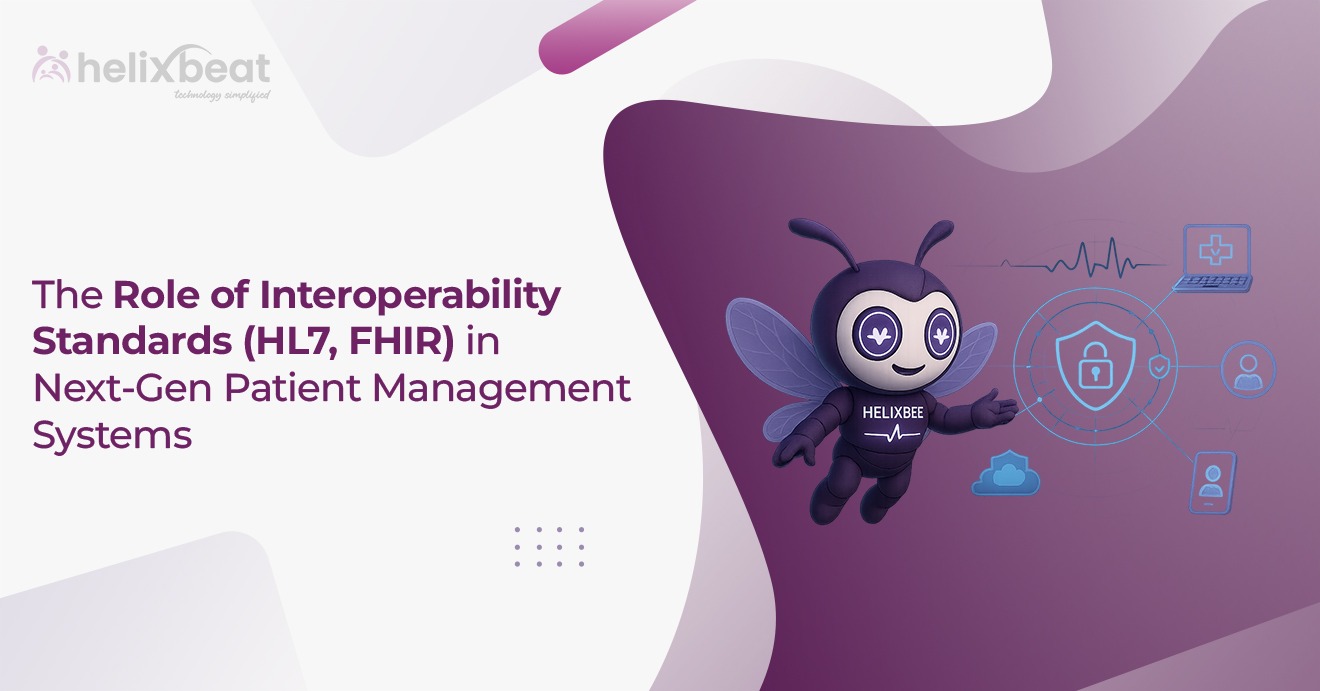Interoperability in healthcare has been a persistent challenge for years. Despite technological advancements, the ability for systems to seamlessly exchange data has remained an issue. However, a key solution to this problem comes from the FHIR standard (Fast Healthcare Interoperability Resources), which provides a modern path to healthcare interoperability.
In this blog, we will discuss how the FHIR standard helps overcome interoperability challenges in healthcare and discuss best practices for its effective implementation

Table of Contents
What is the FHIR Standard?
The FHIR standard is a set of specifications developed by HL7 International, a non-profit organization that creates standards for healthcare data exchange. It aims to simplify healthcare data sharing by defining a common set of rules and structures for exchanging health information. Unlike older standards like HL7 v2 and CDA (Clinical Document Architecture), FHIR is designed to be web-based, modular, and flexible, making it ideal for modern healthcare systems that require fast, real-time data exchanges.
By utilizing FHIR, healthcare systems can integrate various devices, applications, and platforms seamlessly, improving the flow of data and breaking down silos within healthcare organizations.
Interoperability Challenges in Healthcare
Before discussing how FHIR addresses interoperability issues, it’s important to understand the challenges that healthcare organizations face:
- Fragmented Data Sources: Healthcare systems often operate in silos, where data is stored in different formats across various platforms. This fragmentation makes it difficult to share and analyze data comprehensively.
- Complex and Outdated Standards: Older standards like HL7 v2 were not designed for modern technologies like cloud computing, mobile devices, or real-time data sharing. However, many healthcare systems rely on outdated technologies that hinder effective data exchange.
- Data Privacy and Security Concerns: Healthcare data is highly sensitive, and any interoperability solution must adhere to strict data privacy regulations like HIPAA (Health Insurance Portability and Accountability Act) in the U.S. Therefore, the balance between secure data sharing and accessibility is a delicate one.
- Lack of Standardization: With so many different systems, protocols, and data formats in use, standardizing data exchange in healthcare can feel like an overwhelming task. Without common standards, it becomes challenging for systems to “speak the same language.”
- High Costs of Integration: Integrating legacy systems with new technologies can be expensive, both in terms of money and time. Therefore, many healthcare organizations are hesitant to invest in interoperability solutions because of the perceived complexity and costs involved.
How FHIR Addresses Interoperability Issues
The FHIR standard was developed to tackle these challenges head-on. Here’s how it makes a difference:
- Simplifies Data Sharing: FHIR uses modern web technologies like RESTful APIs, JSON, and XML, making it easier for healthcare systems to exchange data in real-time. This eliminates the need for complex, slow-moving data-sharing protocols.
- Modular and Flexible: The FHIR standard is modular, meaning organizations can implement it in phases. This flexibility enables healthcare providers to begin with the most essential aspects of FHIR and gradually expand its use over time.
- Promotes Standardization: By providing a clear structure for data, FHIR reduces the complexity of implementing interoperability. It defines standardized formats for data such as patient information, medications, and diagnoses, so systems can more easily communicate with one another.
- Improves Patient Data Accessibility: With FHIR, data from multiple sources can be accessed through a single platform. This facilitates easier sharing and aggregation of data, which is essential for improving patient outcomes.
- Reduces Costs: FHIR lowers the costs associated with integration because it is designed to be lightweight and web-based. It also promotes the use of open-source technologies, which leads to long-term cost savings.
Best Practices for Implementing the FHIR Standard
Successfully implementing FHIR requires careful planning, collaboration, and adherence to best practices. Below are key strategies for adopting the FHIR standard effectively.
1. Start with Clear Objectives
Before implementing FHIR, healthcare organizations need to have a clear understanding of what they want to achieve. Whether it’s improving patient data exchange, enabling real-time updates, or connecting multiple systems, defining your goals is important.
- Define Scope: Start by identifying the systems that will use FHIR, such as electronic health records (EHRs), laboratory information systems (LIS), or radiology systems.
- Set Key Milestones: Break down the implementation process into manageable milestones. This could include initial integration of basic resources like patient demographics and medication data, followed by more complex integrations like lab results or imaging data.
2. Leverage Existing Data Standards
While FHIR is a modern approach to healthcare interoperability, it is designed to be compatible with existing standards like HL7 v2 and CDA. Many healthcare organizations already use these standards, and transitioning to FHIR can be done in stages.
- Incremental Integration: Begin with basic interoperability and slowly integrate more complex data structures. This allows you to evaluate progress and adjust as needed without overwhelming the existing systems.
- Use FHIR as an Overlay: Implement FHIR as an additional layer over existing systems, allowing you to maintain legacy systems while gradually introducing FHIR-compatible components.
3. Prioritize Data Security and Privacy
FHIR includes features to facilitate secure data exchange, but organizations must take proactive steps to safeguard patient data.
- Encryption: Ensure that all data transmitted using FHIR is encrypted both in transit and at rest to protect against data breaches.
- Access Control: Implement role-based access control (RBAC) to restrict data access to authorized personnel only.
- Comply with Regulations: Make sure that the implementation of FHIR complies with relevant data privacy laws, including HIPAA in the U.S.
4. Encourage Collaboration Between Stakeholders
Successful FHIR implementation requires collaboration across multiple stakeholders, including healthcare providers, IT teams, and external vendors.
- Interdisciplinary Teams: Form cross-functional teams that include healthcare professionals, IT specialists, and project managers. This ensures that the implementation meets both technical and clinical needs.
- Vendor Support: Work with vendors who are experienced in FHIR integration. They can provide the necessary technical expertise and ensure that FHIR is implemented in a way that fits seamlessly into your existing systems.
Monitor and Evaluate Performance
Once FHIR is implemented, monitoring its performance is important to confirm it meets expectations.
- Continuous Improvement: Set up a feedback loop to monitor the system’s effectiveness. Use analytics tools to track how well FHIR-enabled systems are performing and where improvements can be made.
- Address Issues Promptly: Keep an eye out for any integration issues or gaps in data sharing. Addressing these challenges early will prevent them from growing into larger problems down the road.
FUSION: Supercharge Your Healthcare Solutions with FHIR APIs
Built with RESTful APIs, FUSION is a FHIR server created to deliver easier, faster, and more accurate data exchange.
FUSION stores patient data in FHIR format, which is the global standard for healthcare data. This enables different apps, hospitals, and systems to communicate with each other and share critical health information in real-time.
What sets FUSION apart is that it also stores medical coding systems like SNOMED CT, LOINC, and ICD. This keeps all data consistent, accurate, and ready for clinical use, reporting, and analytics.
Key features of FUSION include
- FHIR-native architecture
- Plug-and-play APIs for rapid deployment
- Real-time data sharing across multiple endpoints
- Strong security controls that meet compliance standards
- Support for both structured and unstructured data
Whether a hospital wants to exchange records with external labs or enable app-based clinical tools, FUSION acts as the smart bridge, without needing to replace existing infrastructure.
Final Thoughts
The FHIR standard holds great promise for overcoming the interoperability challenges that have long plagued the healthcare industry. By simplifying data exchange, promoting standardization, and reducing integration costs, FHIR empowers healthcare organizations to work more efficiently and collaboratively.
FUSION can help you implement seamless, secure, and scalable solutions that drive innovation in healthcare with its robust FHIR integration capabilities. Contact us today to discover how FUSION can enhance your healthcare system.
FAQs
1. How is the FHIR standard different from previous healthcare standards like HL7 v2?
Unlike older standards such as HL7 v2, which were complex and difficult to implement, FHIR is designed to be simpler and more flexible. It uses modern web-based technologies and modular components, making it easier to integrate with existing systems and enabling real-time data sharing.
2. Is the FHIR standard secure?
Yes, FHIR can be implemented with robust security measures. It supports encryption, user authentication, and role-based access control to protect sensitive patient data. Additionally, FHIR can be configured to comply with regulatory frameworks like HIPAA, so that data exchange remains secure and compliant.
3. What are the benefits of using the FHIR standard in healthcare?
The main benefits of FHIR include improved data sharing, faster integration of new technologies, better patient care through more accurate and accessible data, and reduced integration costs. It also enables real-time access to patient information, improving decision-making and operational efficiency.
4. What types of data can the FHIR standard handle?
FHIR can handle a wide range of healthcare data, including patient demographics, clinical observations, medications, allergies, lab results, imaging data, and appointment schedules. It allows healthcare providers to access and share relevant patient information in real-time.














